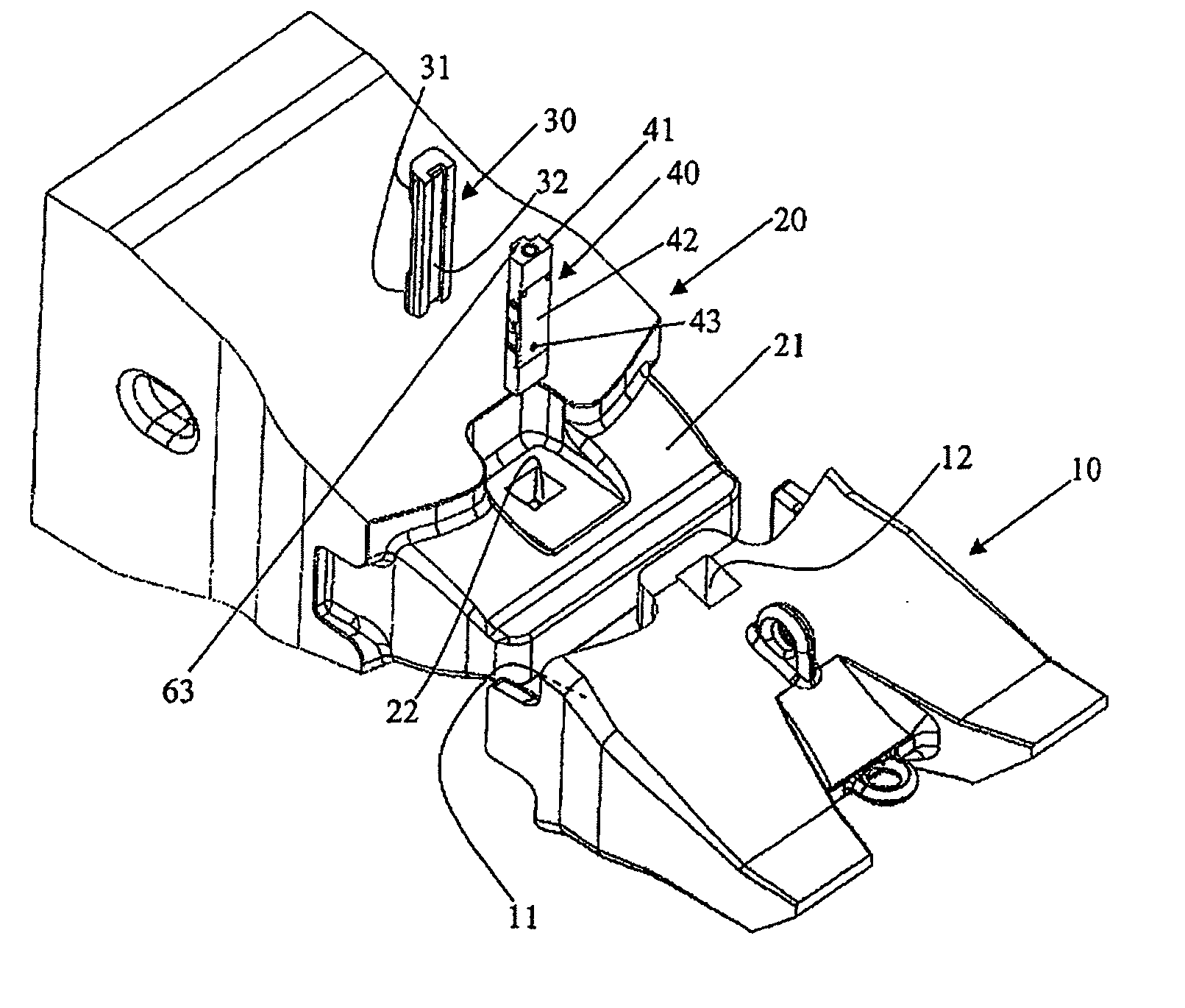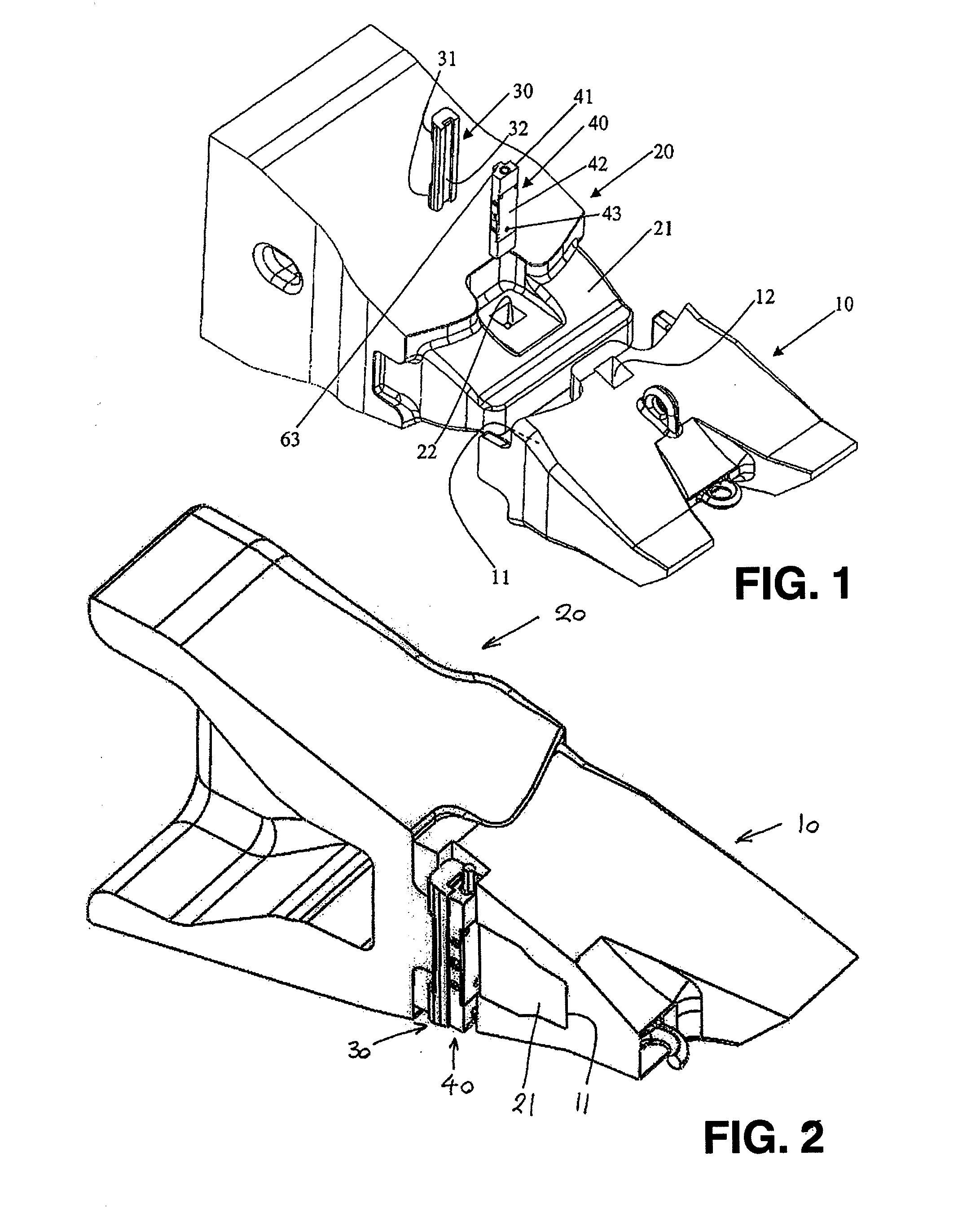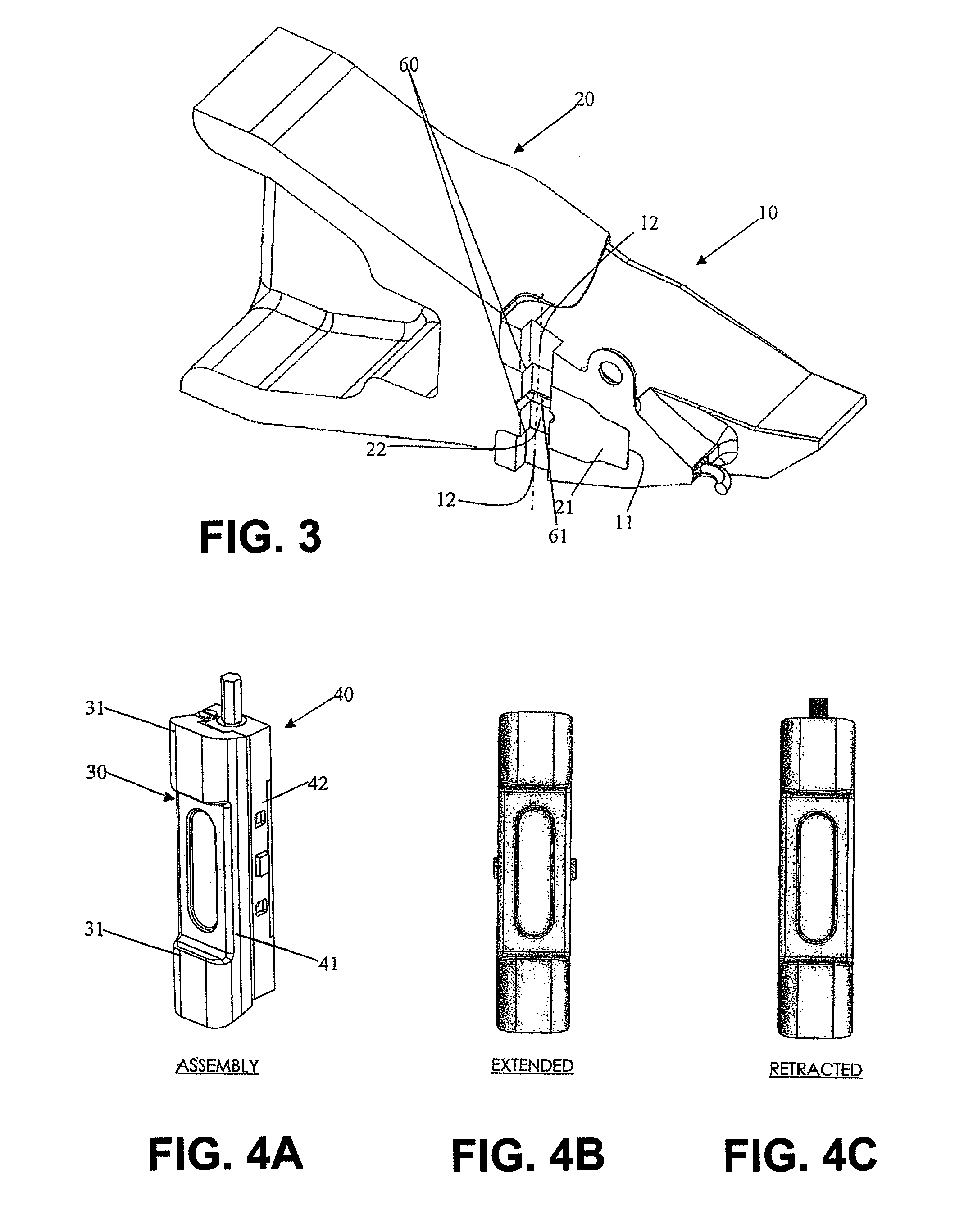Locking device
- Summary
- Abstract
- Description
- Claims
- Application Information
AI Technical Summary
Benefits of technology
Problems solved by technology
Method used
Image
Examples
Embodiment Construction
)
[0052]Referring first to FIGS. 1-3, it can be seen that the excavator tooth assembly comprises a tooth point member 10 (which will be referred to as the “tooth”) and an adapter 20. As shown in FIGS. 2 and 3, tooth 10 has a deep concave recess 11 defining a hollow rear end of the tooth. Adapter 20 has a forwardly protruding nose portion 21 whose shape corresponds to the internal shape of the recess 11 in the tooth. Hence, the tooth can be mounted on the adapter by sliding the hollow rear end of the tooth 10 onto the nose where it is snugly received as shown in FIGS. 2 and 3.
[0053]Also, from FIGS. 1-3 it can be seen that there is a square aperture 22 extending vertically through the full thickness of the nose 21 of the adapter. The tooth 10 also has a pair of corresponding square apertures 12 extending vertically through the thickness of the top and bottom walls of the tooth's hollowed out rear end. When the tooth 10 is slid onto the nose 21 of the adapter, the apertures 12 in the to...
PUM
 Login to View More
Login to View More Abstract
Description
Claims
Application Information
 Login to View More
Login to View More - R&D
- Intellectual Property
- Life Sciences
- Materials
- Tech Scout
- Unparalleled Data Quality
- Higher Quality Content
- 60% Fewer Hallucinations
Browse by: Latest US Patents, China's latest patents, Technical Efficacy Thesaurus, Application Domain, Technology Topic, Popular Technical Reports.
© 2025 PatSnap. All rights reserved.Legal|Privacy policy|Modern Slavery Act Transparency Statement|Sitemap|About US| Contact US: help@patsnap.com



